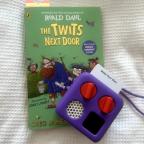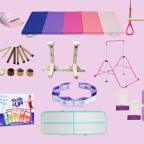
How to Create Vintage-Inspired Photo Projects That Wow
Have you ever scrolled past an old photo and felt a pang of nostalgia? Maybe it's the soft colors, the rough texture, or the way it tells a narrative right away. But when you try to capture that charm in your photos, something seems amiss.
The colors appear fake. The mood is dull. And that dreamy, timeless vibe? Not a single place to be found. So, what's the secret to making vintage-inspired picture projects that really wow? We highlighted some tips below.
1. Pick the Right Subject First
The point of vintage photography is to make you feel something, so pick subjects with personality. Think of vintage family heirlooms, classic automobiles, retro clothes, or even structures that have been around for a long time. These artifacts already have a sense of time and history, so they don't require much to stand out. And don't forget how powerful emotion can be—vintage styles tend to work best for photographs that show a subtle, thoughtful attitude. Choose moments that feel like they may have happened decades ago, like a meaningful look or a calm place. The subject is the most important part of any project, so pick it carefully.
2. Change the color tones and grain
This is where the true magic takes place. To make bright colors less noticeable, desaturate your photograph a little. Next, add warm colors like yellows, browns, and soft pinks to make the prints look antique. To make it feel soft and a little rough, add some film grain and lower the clarity. A lot of editing software features antique presets that you can use as a starting point, but you should change them so they don't look too processed. Don't forget to lower the contrast and raise the shadows a little. This makes the picture look like it has aged over time, not by software.
3. Shoot with film cameras or emulate them
Film photography is the best way to get that old-school feel. If you have an antique camera, give it a try. You'll see how it captures light, color, and even flaws in a new way. Digital options also function if not. That's where Kodak products come in. From their film stocks like Kodak Gold or Portra to digital emulation tools and disposable cameras, Kodak knows vintage. Their presets and color film can give your digital images that same film-like quality without needing a darkroom. Trust the classics—they’ve been doing it since before digital even existed.
4. Use props and backgrounds to provide texture.
Your props are like a time machine for your eyes. Think of old things like typewriters, rotary phones, lace curtains, record players, or books. These small changes made the scene right away. Use wooden walls, vintage furniture, or floral wallpapers to finish off the theme. Your background is important too. Flea markets and thrift stores are great places to discover the ideal vintage items. When you style your photo, consider the props in the foreground, the main subject, and the backdrop. Each part should help you get into the time you're trying to channel. It's about constructing a universe that your audience wants to enter.
5. Don't just use filters when you edit.
This is where a lot of vintage photo efforts go wrong: people use filters that don't work for everyone. Instead, write like you're telling a narrative. Add a little vignette to pull the eye in. Use split toning to make the highlights warm and the shadows chilly. Move the white balance a little bit toward yellow. Don't go overboard; old doesn't mean tacky. Try to
find something that seems antique yet still makes your subject stand out. Keep in mind that you're not hiding flaws; you're showing off character.
6. Print It Out for the Real Nostalgia
Photo projects that are inspired by the past need a solid, physical finish. Use matte paper or Polaroid- style frames to print your pictures for a real look. You may even go above and beyond and use old frames to construct a scrapbook or a DIY gallery wall.
Printing makes your creation feel more finished, and it offers you a concrete link to the effort you put in. In a world where everything is continually moving, having something in your hands is powerful. It adds to the feeling of the old-fashioned aura.
Conclusion
Creating vintage-inspired photo projects is about recreating the past in your own unique manner, not
just replicating it. By paying attention to color tones, textures, props, and even storytelling, you're not
just editing photos; you're creating memorable moments.
So go ahead and experiment with layers and lighting, and don't be afraid to dig into the past to create something new. Your next photography project? It might simply halt someone in mid-scroll.














